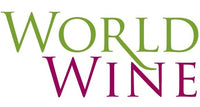We aim to have all wines be vintage specific. In the case the listed vintage is out of stock and you note you would like that particular vintage, we will inform you via email for approval to go ahead.
About This Wine
Situated on the eastern edge of the Breisgau vineyards, the Sommerhalde vineyard lies next to the Black Forest. It's a southeast-facing site with reddish ferruginous soil streaked with veins of shell limestone, with very good water-holding capacity. Sommerhalde covers 40 hectares, of which Huber owns 2.15 ha, all of which are classified Grosses Gewächs. It sits at an altitude of 240-300m above sea level and has a slope of between 20% and 50%. Planting density of the old plants is 4,500 vines/ha, while the new plantings are between 7,000 and 9,000 vines/ha. Cool night winds caress the grapes and give them great fruitiness. The south eastern location and the day's first rays of sun dry the grapes very quickly, which is ideal for Pinot Noir. Average yields for Pinot Noir are 30 hl/ha. The vineyard typically gives great fruit with clear, lively hints of dark berries and plenty of minerality.
| Type | Red Wine |
|---|---|
| Varietal(s) | Pinot Noir |
| Country | Germany |
| Region | Baden |
| Brand | Huber |
| Vintage | 2013 |
About German Wines

Germany is the world’s northernmost fine wine producing region and thus requires its vines to endure some of the coldest temperatures. Fortunately, the country’s star variety, Riesling, does well in cooler climates and can survive even these freezing winters.
Germany Riesling is classified by ripeness at harvest which is also used to indicate the wine’s level of residual sugar. Picking earlier means the grapes have less time to ripen and the corresponding wines will be on the drier side; while picking later gives the grapes the opportunity full ripen and produce a lusciously sweet Riesling. The classifications from driest to sweetest: Kabinett, Spätlese, Auslese, Beerenauslese, Trockenbeerenauslese and Eiswein (ice wine). While not as common to age white wines outside of Chardonnay, top tier German Rieslings can be aged for decades.
Other notable white grape varieties produced in Germany include Müller-Thurgau (a cross between Riesling and Madelaine Royale in the search for varieties that could withstand the extreme temperatures), Grauburguner (Pinot Gris) and Weissburguner (Pinot Blanc). The cooler German climate leads to earlier harvesting in general and gives German wines a distinctive character of higher acidity.
Historically red wine has always been harder to produce in the German climate. However, Pinot Noir grown in slightly warmer pockets of the country, has been highly successful in recent times. Going by the German name, Spätburgunder, German Pinot Noir can be elegant, structured and have vibrant acidity.





 France
France Italy
Italy Spain
Spain Australia
Australia New-Zealand
New-Zealand Germany
Germany Austria
Austria Portugal
Portugal South-Africa
South-Africa Greece
Greece USA
USA